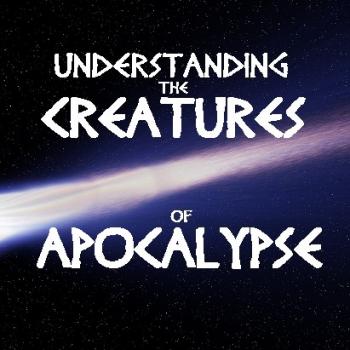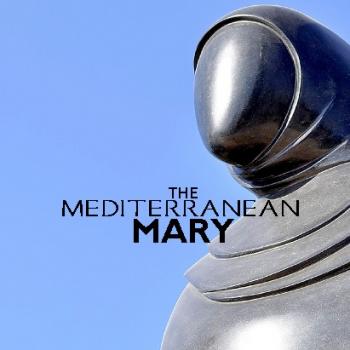
True throughout, but with only some facts—that’s the Gospel Infancy Narratives of “Matthew” and “Luke.”
True? But how, if it’s not all factual?
In the previous post, and throughout the past two weeks, we have demonstrated that treating Matthew 1—2 and Luke 1—2 and Luke’s genealogy as biographically precise historical records would be wrong. For many Catholics and other Christians who cannot distinguish what is true and what is factual, this is most disheartening. Many ask: what good are these stories if they are not straight-up historical? What value could they possibly have? Who cares about fables and old wives’ tales?
True Fundamentalism
Please allow me a brief excursus: people ought to understand something quite unpleasant, yet true. Fundamentalists—and I mean “fundamentalists” in the most general sense, are basically atheists no matter how they claim otherwise. That’s true if they be Christian or non-Christian. It’s true no matter if they are Pentecostals, or “Bible-believing” Evangelicals, or ex-Catholic “Bible Christians,” or Eastern Orthodox, or Catholic fundamentalists (whether biblical or doctrinal or charismatic or devotional/emotional).
These folks have sold out for the cheap grace of scientism, crude physicalism, and addiction for “see-it-to-believe-it” views of modern materialistic atheism. Sadly, they just don’t know that they are atheists! Show me a fundamentalist and I will show you a scratch-off atheist. And show me many (not all) atheists, and I will show you a scratch-off fundamentalist. Indeed, a devastated fundamentalist (rationalist with old mental gymnastics shattered) makes a prolific and silly atheist (rationalist with new mental gymnastics).
That this is true can be confirmed all over social media. See Catholics and other Christians everywhere claiming how they can prove this or that belief, or this or that practice, to metaphysical certitude. They claim to prove things beyond the possibility of doubt. When you observe that, you can know for sure that you are dealing with materialistic atheists in disguise and in denial. There is no faith here, friends! It’s just the idolatry of being safe and certain! Be on the lookout for rigid atheistic scientism and materialism costumed up with religious talk, imagery, and baloney.
True and Historical Parts
Back to considering the Infancy Narratives of “Matthew” and “Luke,” no one here is claiming that these texts lack any material that might be called rightly historical. Neither or sources Raymond E. Brown or any Context Group scholar says that the birth stories are not historical in any way. However, we have presented many reasons why these scholars think that a good number of the events described in those stories are probably not historical.
Is it true that there are historical details to be found in both birth narratives of Matthew 1—2 and Luke 1—2? Of course. But to call either the Matthean Infancy Narrative or Luke’s Infancy Narrative completely historical is untenable.
When it comes to the birth and childhood of Jesus, what do “Matthew” and “Luke” agree about? Surely, they disagree about many things! More to it, their disagreements are often irreconcilable contradictions. However, with that said, we must admit that it is true that they also do agree on certain crucial matters. Scholars like Father Raymond E. Brown believed that these points of agreement might be properly considered the most important points.
True and Important Agreement
Divine annunciation—Both “Matthew” and “Luke” agree that an announcement from sky vault was given prior to Jesus’ birth. In “Matthew” it is given to Joseph. In “Luke” it is given to Mary. As we will see in future posts, both proclamations come by way of what cognitive neuroscience calls “altered states of consciousness experiences.” All humans are capable of them. These ASC experiences speak about Jesus’ forthcoming greatness. This means both Matthean and Lukan annunciations agree that Jesus is prepared for by providence and is a revelation from the God of Israel to Israel.
The Physical virginity of Mary—Both “Matthew” and “Luke” agree that Jesus was conceived without a human father. The initiative for Jesus’ virginal conception and is the God of Israel and God’s salvific plan for Israel. Later, in a future post, we will consider the complexity of what is meant by biblical “virginity.”
David and Bethlehem—Both Infancy Narratives agree that Jesus belongs to the House of David. Again, despite their many irreconcilable disagreements, both Matthean and Lukan genealogies agree that Joseph descends from King David. Both Matthew 1—2 and Luke 1—2 agree that Jesus of Nazareth was born in Bethlehem.
They end up in Nazareth—Although “Matthew” (2:22-23) and “Luke” (2:39) significantly disagree on how the Holy Family ends up there, both agree that ultimately come to live in Nazareth.
Scholars like Brown hold that these are extremely important agreements. Brown would also argue that in addition to being true, these details are also historical.
Missing Out on the True
Be careful about being myopic with the historicity of any Bible story! If you are obsessed with these Infancy Stories of Jesus being historically precise and proving them as such you probably are blind to their great value. You are in danger of missing the True!
The True in “Matthew”
Scholars such as Brown consider the Matthean Infancy Narrative as a well-crafted “catechism” of the God of Israel’s saving work throughout the Hebrew Scriptures. Consider all those names of patriarchs and kings that pop up in the Matthean genealogy—readers are to be reminded of their stories and what God accomplished through them. Brown believed that even the unknown names “Matthew” lists speaks about how Jesus heals and preaches to the marginalized.
When Brown read the prophetic passages in the Matthean birth story, he considered them the author’s attempt to relate Jesus’ birth to the testimony of the prophets. One should not be reading the prophecies in Matthew 1—2 and thinking anything remotely like Nostradamus. Rather, by seeing Jesus “fulfill” Scripture, we ought to remember the deep social commentary of Isaiah, Jeremiah, Hosea, and others. “Matthew” expects his audience to have deep familiarity with the scandalous prophetic tradition of Israel and catch his allusions.
The True about Joseph
The Matthean Joseph is mostly a construct. That does not make the character less true, but actually brimming with truth! This Israelite saddiq is full of dreams whereby he receives messages from God! He races from the powers of death by journeying into Egypt, whereby he saves his Israelite family. That sounds familiar… where have I heard that story before?
Raymond E. Brown wisely recognized that these details evoked the Joseph of Genesis in the time of the Patriarchs. That Joseph dreamed dreams and interpreted messages from God. He also saved Israel, his family, by bringing them to Egypt.
Even though it is extremely doubtful that Herod the Great slaughtered all the infants in Judea, this story element reminds the Matthean Jesus group about the Pharaoh in Egypt who tried to kill Moses and Israel.
Seen this way, it should be clear that “Matthew” is presenting in Jesus a recapitulation of the story of Israel. This is his way of introducing the Gospel which really begins (see Mark 1:1-15 ) with the Baptism of Jesus.
How “Luke” is True
When it came to the Lukan Infancy Narrative, Brown found Israelite concerns similar to “Matthew.” But things are more subtle in “Luke,” hands down the most skilled writer in the New Testament, by far. His artistic balancing of details is masterful and exquisite.
Notice the literary skill of “Luke” making a parallel between the annunciation of John the Baptist’s birth (Luke 1:5-25) and the annunciation of Jesus’ birth (Luke 1:26-38). This comes together as the two mothers of both prophets meet (Luke 1:39-45). Then “Luke” follows this up with another parallel, first the birth and genital mutilation of John the Baptist (Luke 1:57-66) praised in song (Luke 1:67-79). Then the same for Jesus, in identical order (Luke 2:1-21; 29-32). This isn’t crude biographical chronology, folks! This is meaningful ART! It speaks of who Jesus is and what he means to the Lukan Jesus group, not the nitty-gritty of how and when exactly things happened.
If you don’t soak in the Scriptures of Israel, how will you taste the subtleties of the crisis of Zechariah and Elizabeth (Genesis 15:8; compare with Luke 1:18)? This is all “Luke” crafting a story invoking Abraham and Sarah who were too old to have children.
Magnificent Lukan Use of the Old Testament
Did the Lukan presentation of Jesus in the Temple really happen? Probably not. What matters is we catch what is being evoked by “Luke.” Baby Jesus in the Temple before old Simeon echoes baby Samuel in the Temple before old Eli.
Is the Magnificat sung by Mary equivalent to a tape recording of what she actually sung at some point in her life? As you obsess with your 21st century Western questions like this one, make sure you don’t miss how the Magnificat reflects the canticle of Hannah, Samuel’s mother (1 Samuel 2:1–10).
This is all creative and artistic Lukan superimposition. As “Matthew” does in his own way, “Luke” is evoking in his audience memories from the ancient Scriptures, events and people who for his community have become pointers to Jesus.
All True
Raymond E. Brown said that both Matthew 1—2 and Luke 1—2 anticipate the Gospel narratives that follow. The basic message of both the Matthean annunciation and Lukan annunciation is that Jesus is the “Son of God” and messiah. This basic message is received and obeyed by Joseph in “Matthew” and by Mary in “Luke.” Both Infancy Narratives demonstrate that some will receive the Gospel—e.g., magi in “Matthew” and shepherds in “Luke.” But both Infancy Narratives also speak of the rejection of the Good News—in “Matthew” Herod’s evil foreshadows the chief priests and scribes, while “Luke” implies this in 2:34.
True Understanding of the Infancy Narratives
When do we receive the Infancy Narratives properly? Following Brown and other scholars, his can only be when we emphasize their rich content. Only when we grapple with who Jesus is, and accept that when he comes decisions are forced, and hostility and rejection will happen. This is a far cry from 21st century sentimental Christians obsessing over facticity and historicity, trying to cram “Happy Birthday, Baby Jesus” nonsense into history.
Considering again atheism-in-disguise, how is it that fundamentalism is scratch-off atheism? It’s all in the paradigm, in how the fundamentalist worships the false god “Certitude.” As a fundamentalist I can demonstrate this experience or proof is beyond all doubt, beyond all possibility of doubt. And I derive from this arrogant superiority. And I can communicate this to everyone so that they are fixed in a catch-22 where if they don’t agree with me, then, they are either 1) stupid beyond all help or 2) diabolic.
Just look at their premise. Unless we can know something with metaphysical certitude and demonstrate that with the precision and accuracy of science, why believe it? This way of being and approaching truth is childish and unsustainable.
Our culture breeds silly atheism—and its disguised incarnation, fundamentalism. It geometrically increases the inability, the crippled hapless state for Western Christians to distinguish TRUTH from FACT. For our culture, FACT = TRUTH so much so that if a proposed belief is not 100 percent factual then it 0 percent truthful and worthless.












